

Kuala Lumpur was a pretty interesting town. It was crowded, but not as claustrophobic as Tokyo or Hong Kong. Also, it wasn't a horrid maze of concrete and even more concrete like Tokyo or Hong Kong (they believe in something called "colors" in Malaysia, apparently).
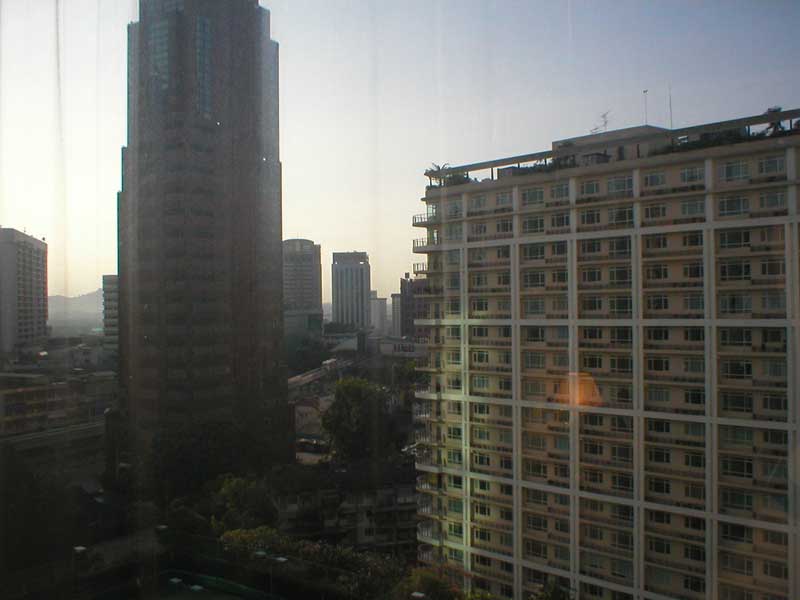
This was the view from our hotel. We were in a luxury hotel of sorts in an area called the "Golden Triangle"--the shopping and commercial heart of the city. It's really quite modern, and has a great monorail and light-rail transit system that only costs around a quarter per ride in US money. Our hotel, Hotel Istana, was decently nice, and they had a fabulous breakfast every morning.
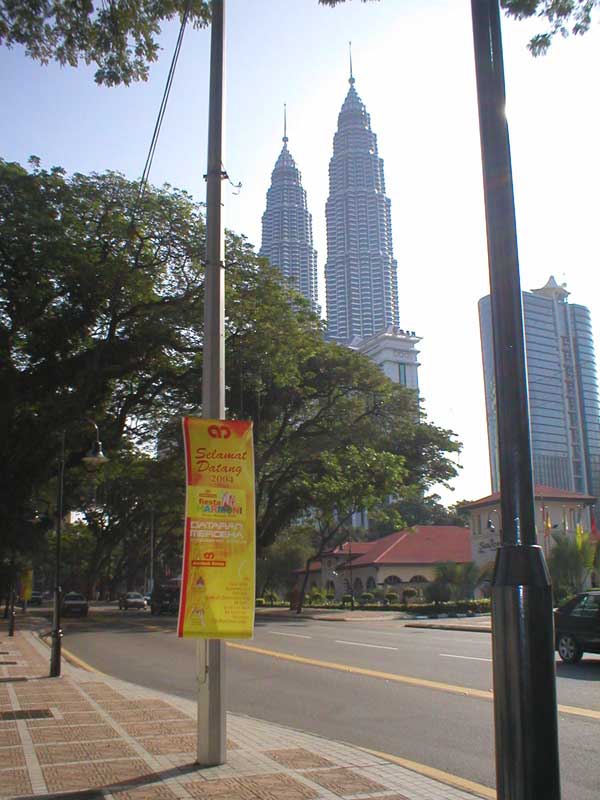
The first tourist trip that we made was to the Petronas Towers--currently the world's tallest building (at least until the Taipei Tower or Freedom Tower is finished). Unlike other tall buildings, there isn't anything particularily tall neighboring the Petronas Towers. They almost seem out of place sort of on the edge of the Golden Triangle. By the way, the poster in the foreground says "Selamat Datang," which is Malay for "Welcome."
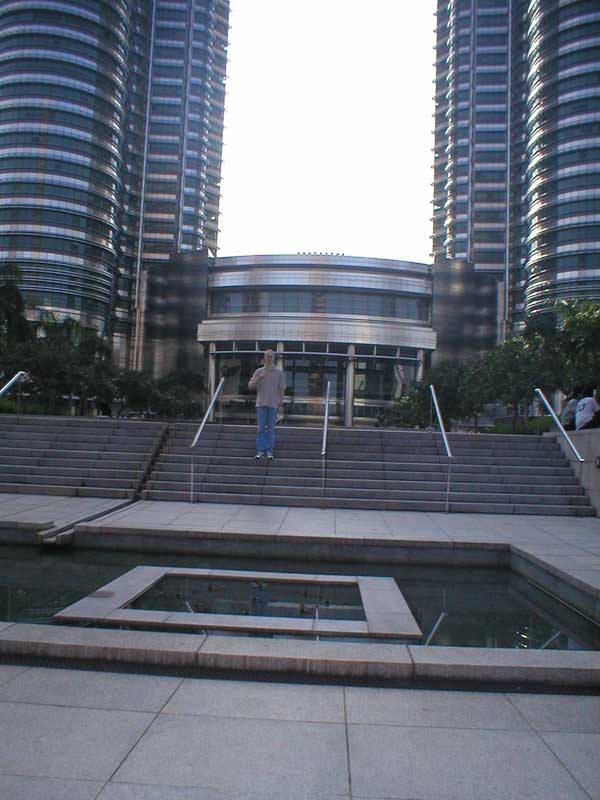
This is Peter at the Petronas towers. Kim must have been a bit tipsy when she
took the picture ;)
Right before this, we ran into some Buddhist monks who handed us some interesting
prayer cards in Chinese that were completely illegible to us. We just thought
they were nice gifts, so we started walking away, but one of the monks ran after
us and pointed to a card with some English on it requesting donations for charities.
We both ended up contributing 10 ringit a piece (about $2.50). Kim got an attractive
prayer necklace as well. Too bad we're not Buddhist... or Chinese.
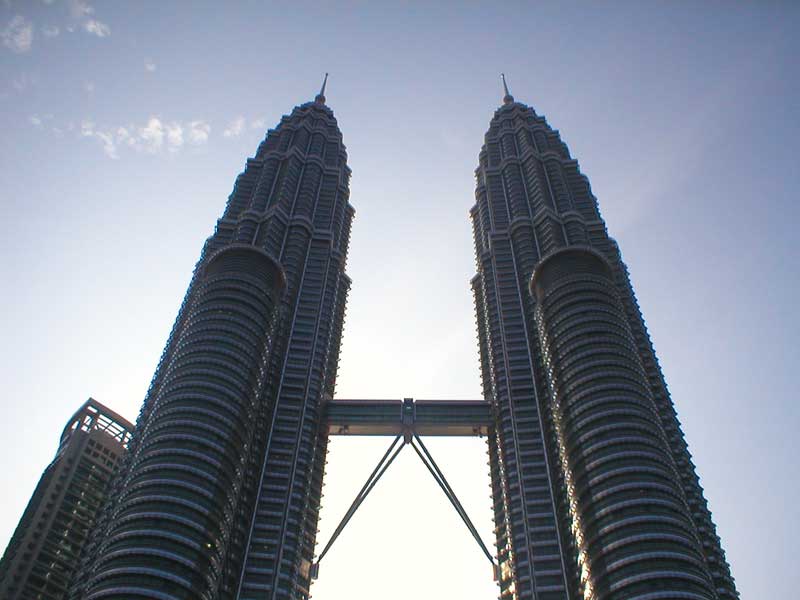
Here are the spires of the Towers... a pretty impressive sight. The archecture of the towers has a really neat semi-Moorish look to it. And Kim took a "damn good" photo here. (as opposed to the one of Peter on the steps)
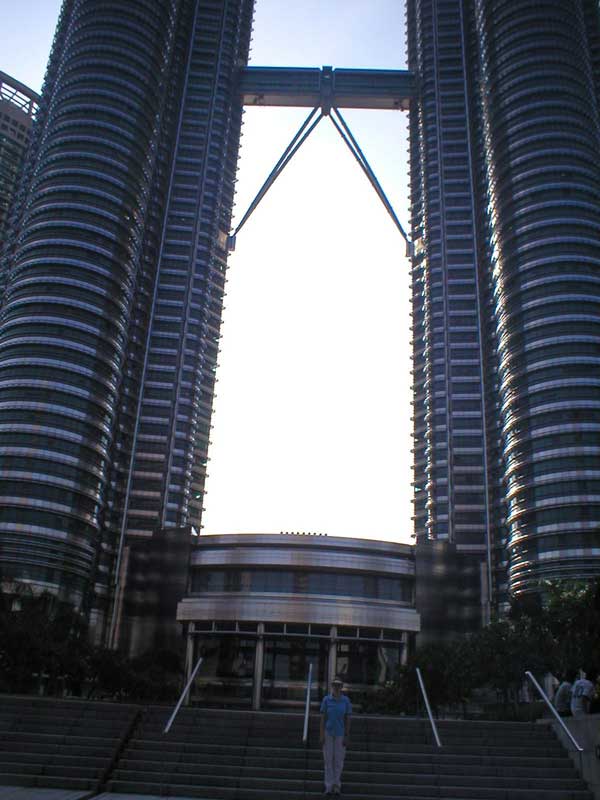
Well... it looks like Peter's picture of Kim at the Towers wasn't much better...
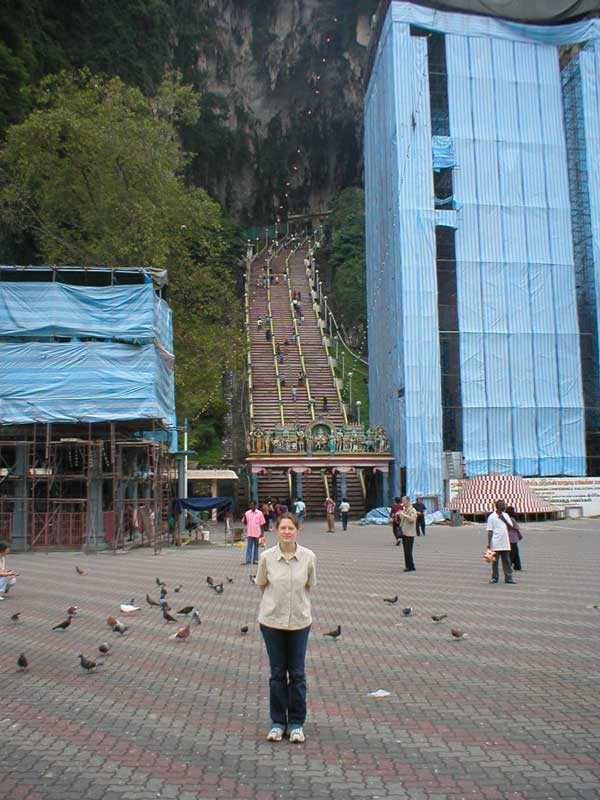
The next day, we took a cab to a Hindu religious site called the "Batu Caves." First, we should clarify something about the ethnic and religious breakdown of Malaysia. The penninsula is 55% Malays, 30% Chinese, 10% Indian, and 5% tribal natives. The Malays are mostly Muslim, the Chinese are mostly Buddhist, and the Indians are mostly Hindu, so all three religions are prominent. There is also a small Christian population... including at least one Indian reverend we saw on TV in the KL airport, wearing sun glasses and producing religious music videos (we were very confused). So these caves are a Hindu temple. Kim is standing in front of the 272 steps that lead into the caves.
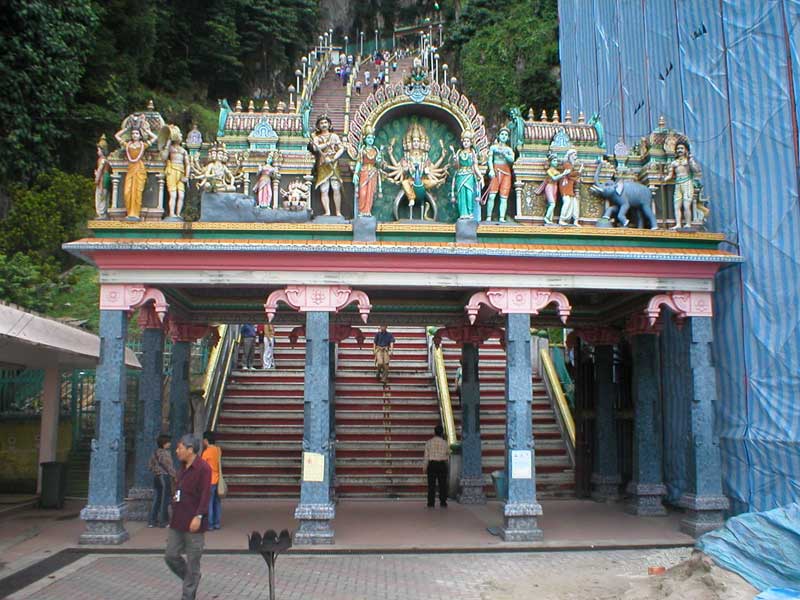
This is the gate to the stairway leading up to the Batu Caves. You can get a taste of Indian Hindu-style religious statues from this view. On the right, we think they were restoring one of the larger statues, hence the blue sheeting. Hindu religious art is obviously very colorful, as is everything from Indian culture in general. Quite a contrast with drab Japan.
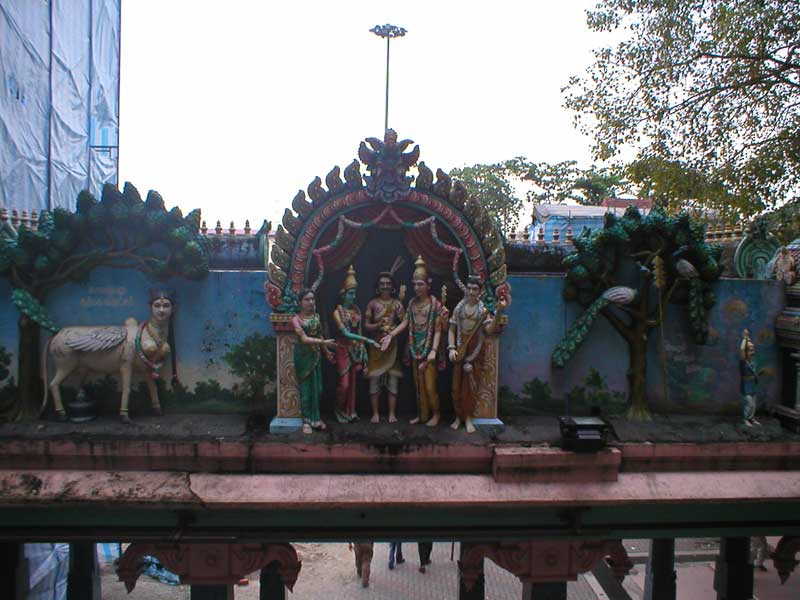
This is a view of the reverse of the same gate. Most of these statues are representations of Hindu gods. This particular temple is devoted to Shiva, one of the primary manifestations of the Hindu god.
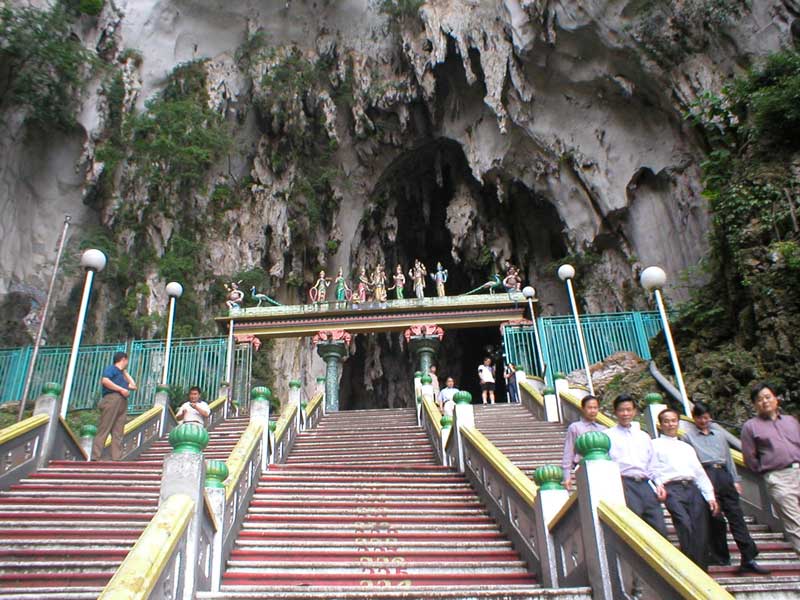
As we neared the top, we could see the entrance to the caves and the final gate at the top. At the time we visited, there were many tourists taking a look around.
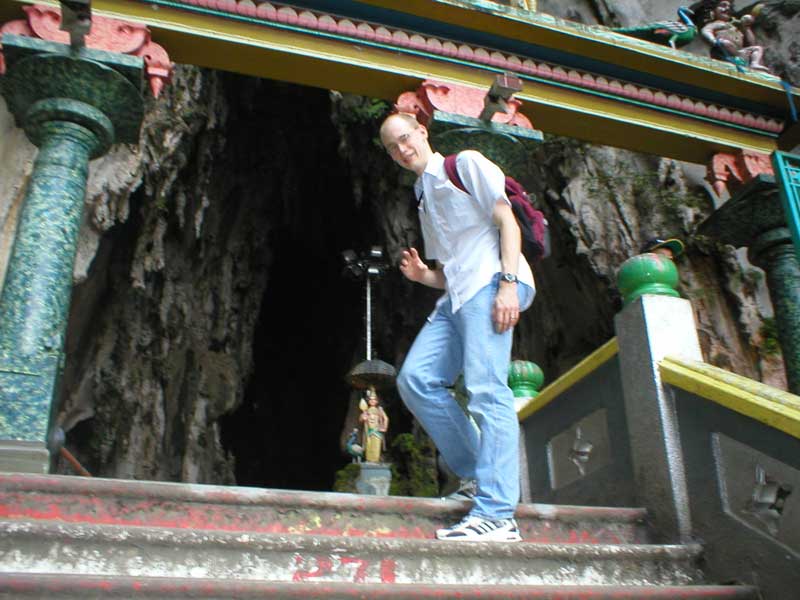
Here's Peter on the last step, preparing to enter the cave area.
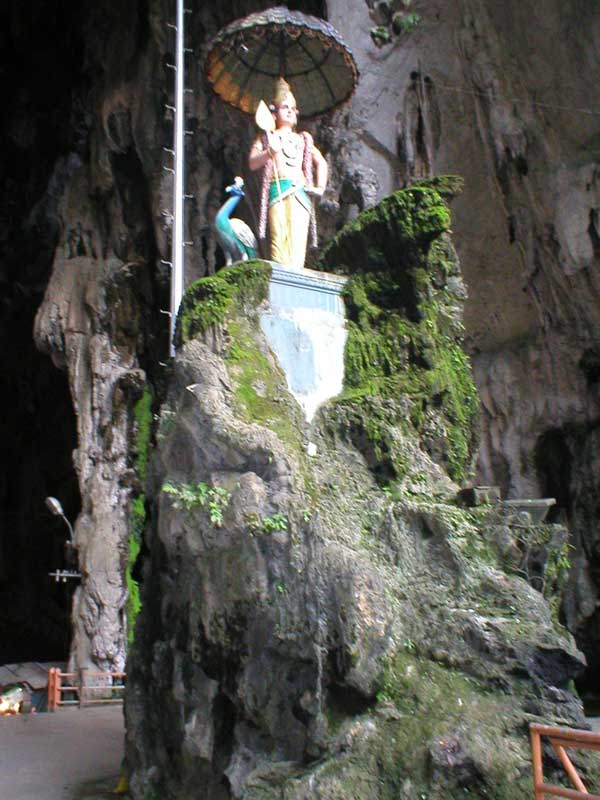
To the right was a picturesque statue mounted on an outcropping of rock.
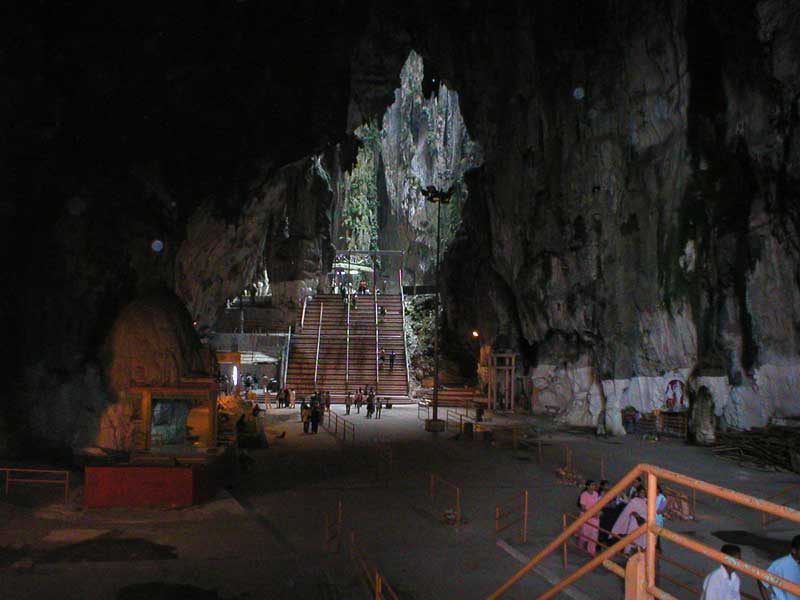
This is a view of the entrance cavern. There was a sovenier shop to the right. Some artists were also carving statues and cleaning others throughout the cave area. Up ahead is the opening in the cave containing the main shrine.
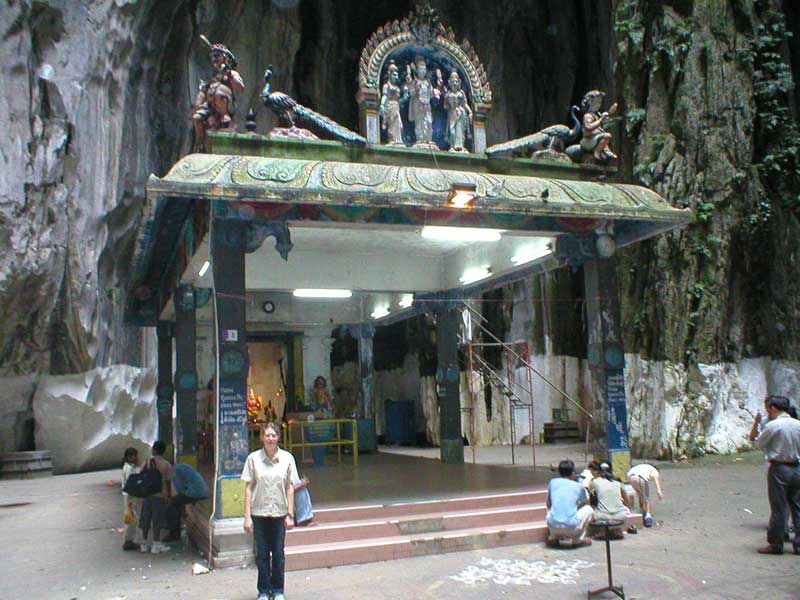
This is Kim with the inner shrine at the Batu caves. We aren't quite sure what's involved with a religious visit to this area, but that wasn't why we were here. The peacocks on top of the shrine are pretty interesting statues.
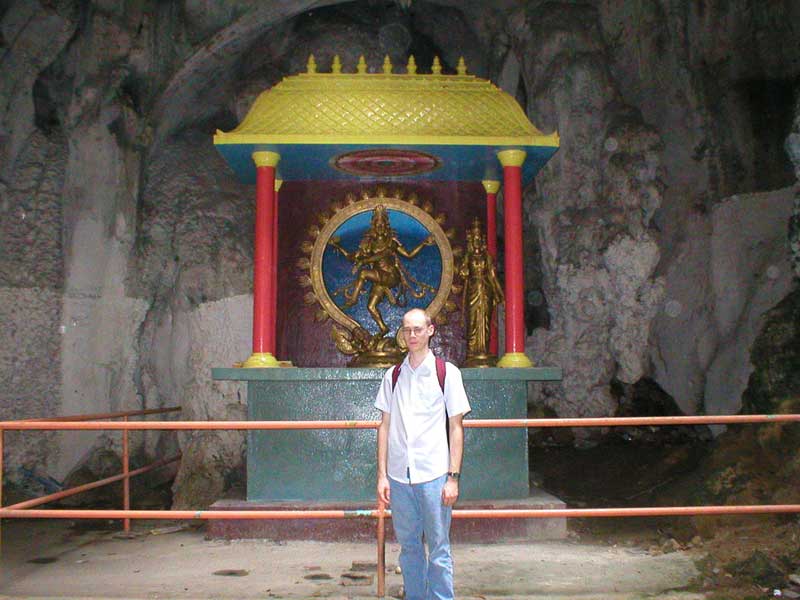
Here's Peter with Vishnu, the Destroyer. He did not, however, destroy us.
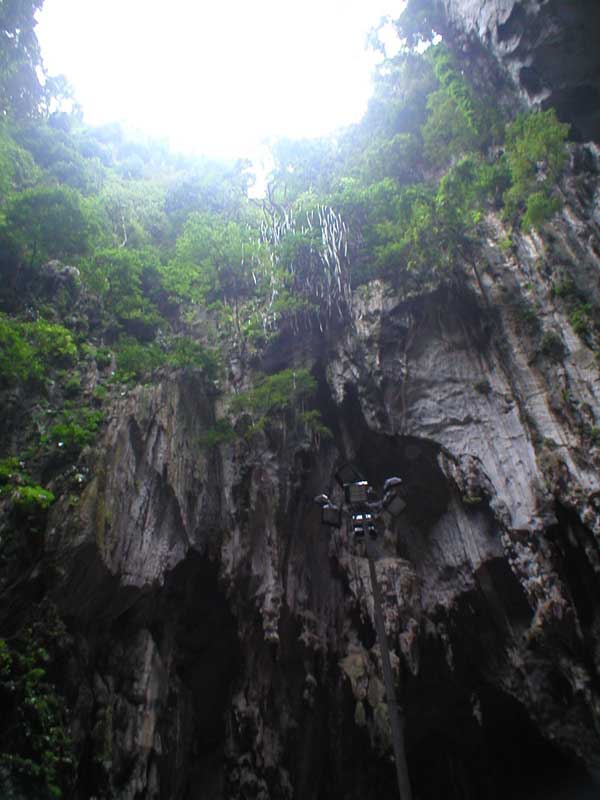
The inner area of the caves was actually open at the top. This view shows the stunning limestone formations that surround the inner area of the Batu Caves.
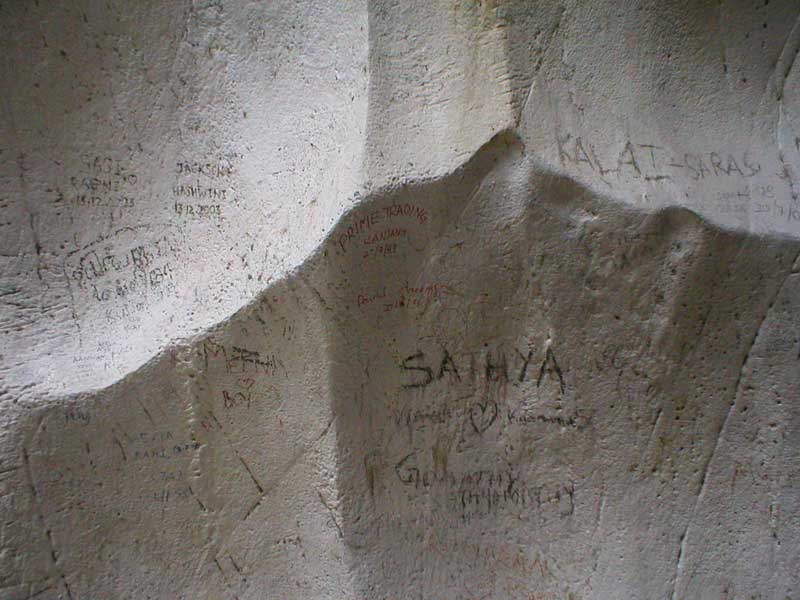
Further on around the inner area of the caves was some softer limestone where several travelers had left their mark. We thought it was entertaining to see some grafitti in Hindi (on the left).
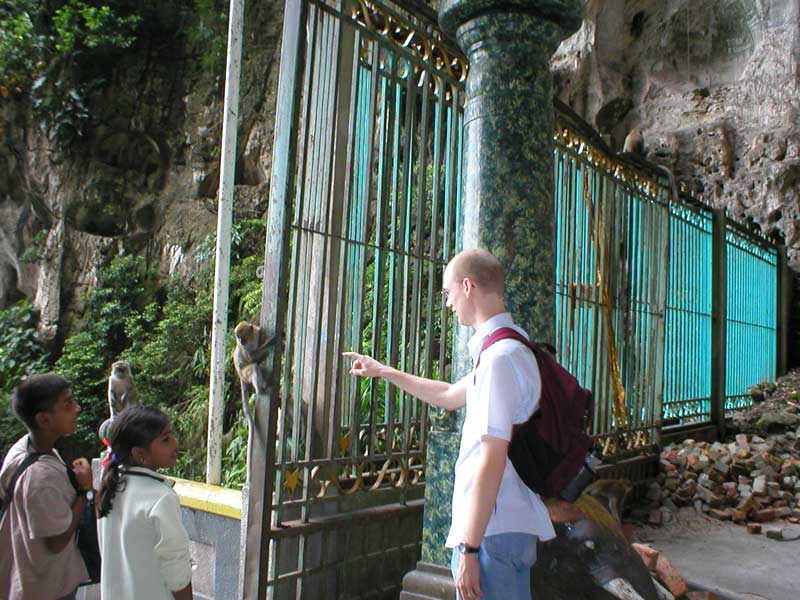
Another feature of the Batu Caves was the batch of local cave monkeys. These monkeys begged for peanuts, but as we later learned when we visited the Malaysian beach, monkeys don't always beg for what they want (see Teluk Nippah for more information).
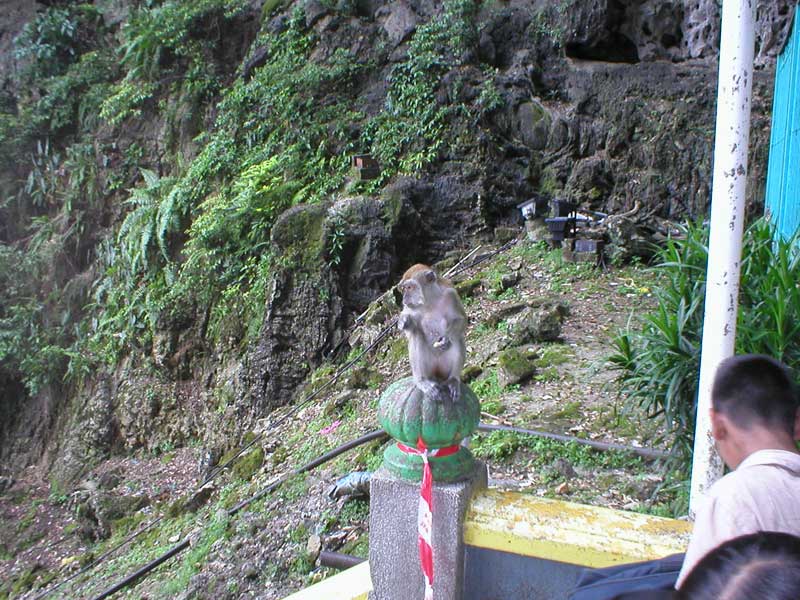
Here's one of the fellows up close. They were quite agile with the peanuts, and sometimes they fought over them.
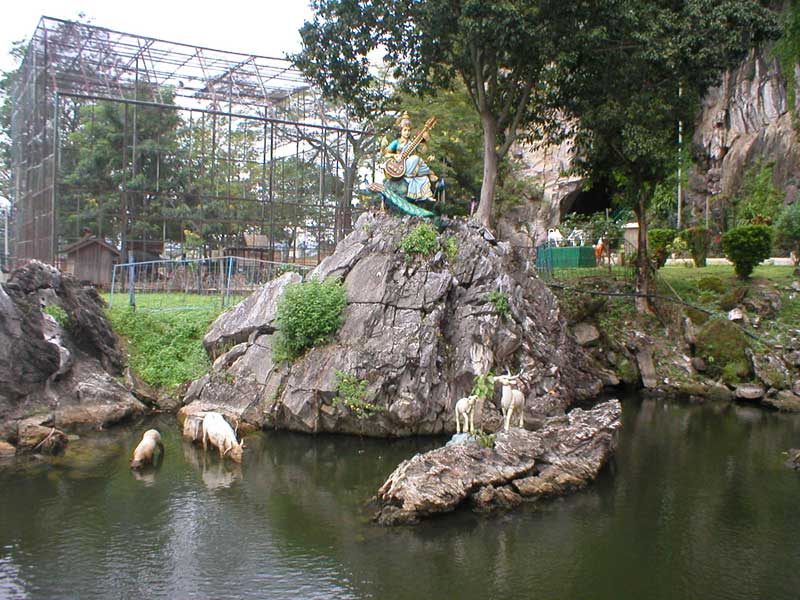
After visiting the main cave, we paid a few ringit to go visit the Hindu art gallery area of the caves. We crossed a turtle pond that was decorated with several animal sculptures and one statue of a Hindu god playing a sitar. The cage in the background has lots of pheasants and other birds in it.
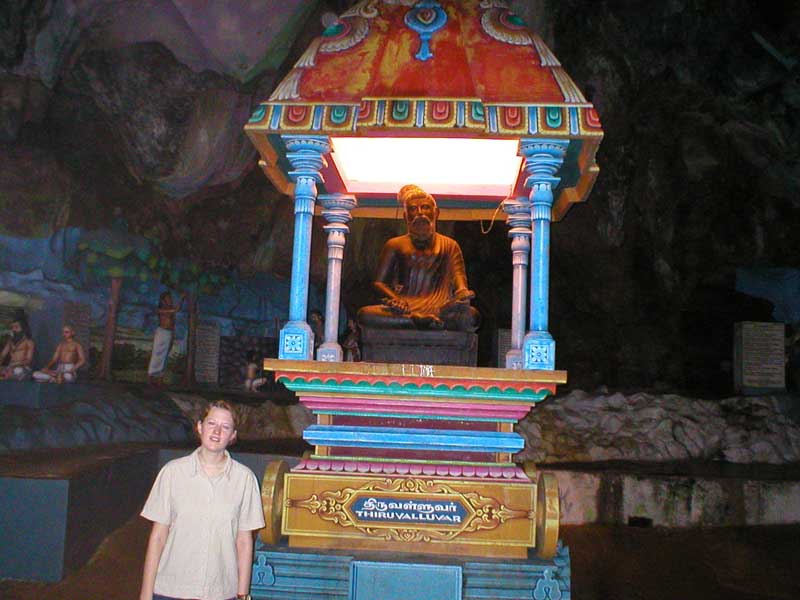
Inside the first of the two art caves, we found this guy lording over the place. Probably he was the benefactor of that particular art display (which was illustrated passages of some Hindu scripture). As you can see, his name was Thiru Valluvar.
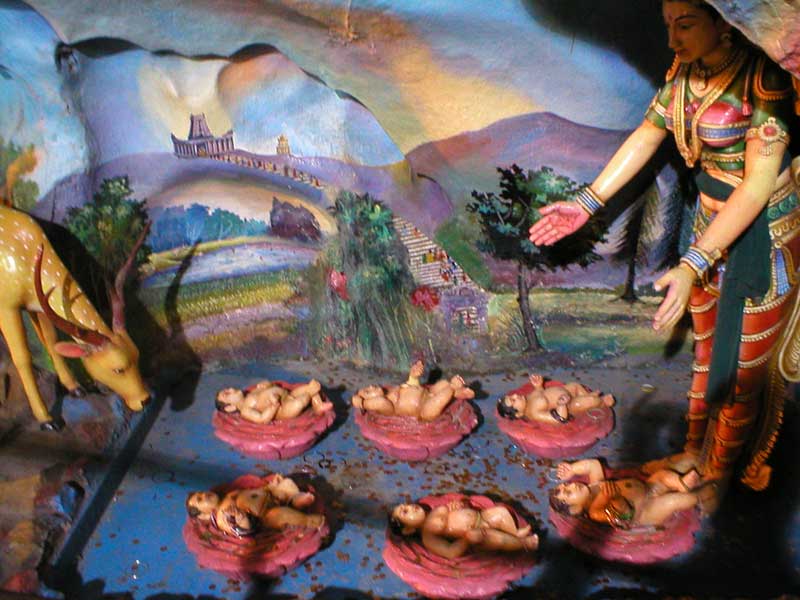
The next cave filled with art was more colorful and less washed-out than the previous one. At the entrance, we saw this woman with her six babies, which appear to be set up to go down the river. Bon voyage, babies!
That was the end of our trip to the Batu Caves. We took the taxi (which was waiting for us) back to our hotel and prepared for our next adventure... to the KL Tower (Menara Kuala Lumpur). This is the fourth tallest telecommunications tower in the world at a height of 421m (1,300 feet or so).
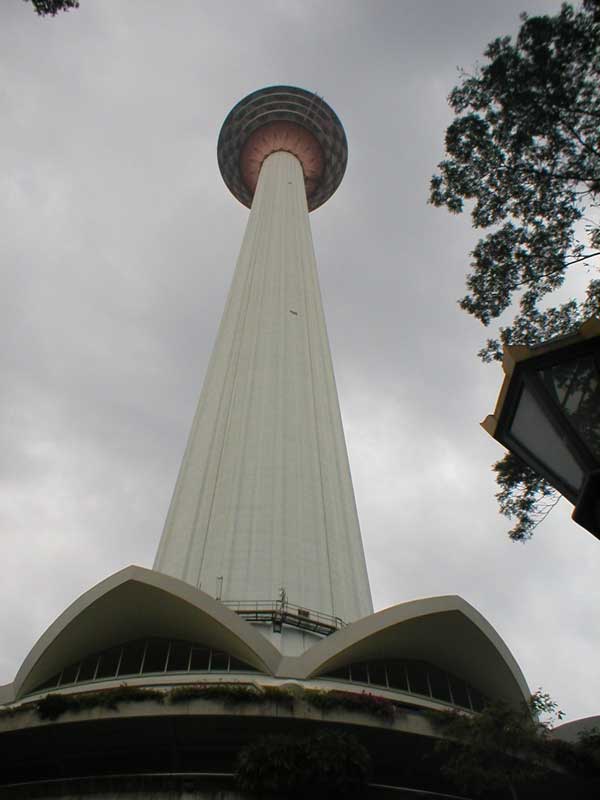
Here's a good view of the monstrosity from the outside. Malaysia was into constructing really large, pointless things for a while--an enormous airport, the Petronas Towers, a high-tech city, a brand-new capital city, and this.
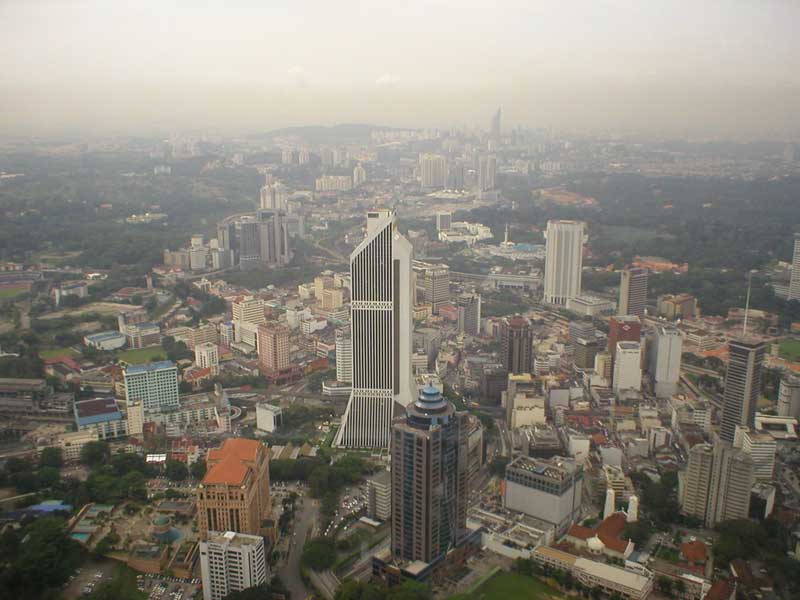
We paid the 15 ringit each to get to the top of the tower, where we were able to hear an English-language audio tour as we looked out at the various views. Unfortunately, as you can see, the day was a bit hazy, so we didn't have the best view. This is just a general view encompassing part of the "Golden Triangle" area.
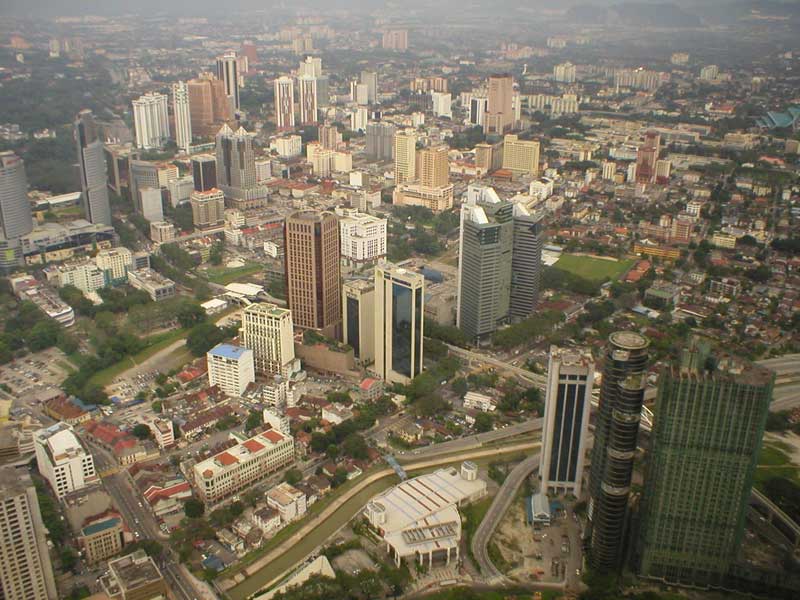
Here's another view of the "Golden Triangle." On the lower right you can see one of the legacies of Malaysia's boom to bust transition in the late 90s. The building surrounded by green screening is unfinished, and likely to remain that way for the time being. There are tons of half-finished concrete projects around town. They simply ran out of money and stopped building. The Malaysian economy is now growing again, so maybe some of it will get cleaned up in the near future.
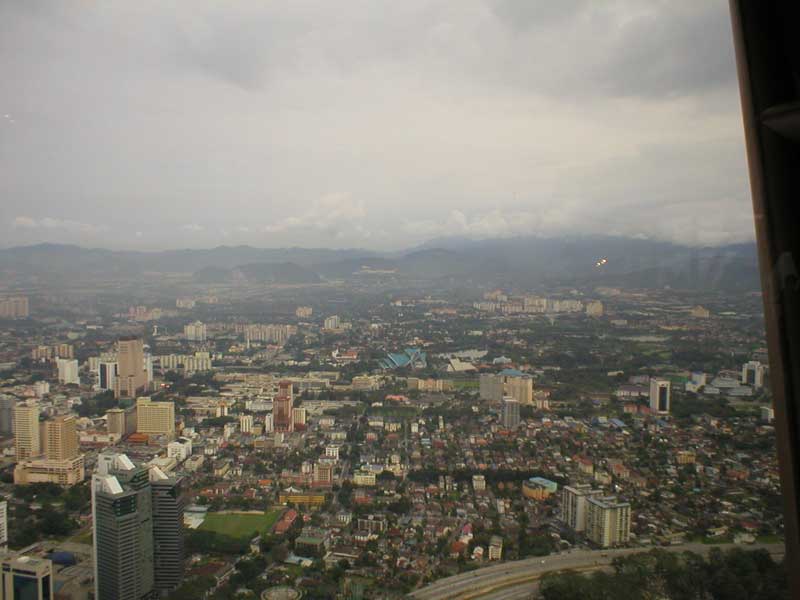
In the background of this picture you can see a cluster of lower hills. This is where the Batu Caves are.
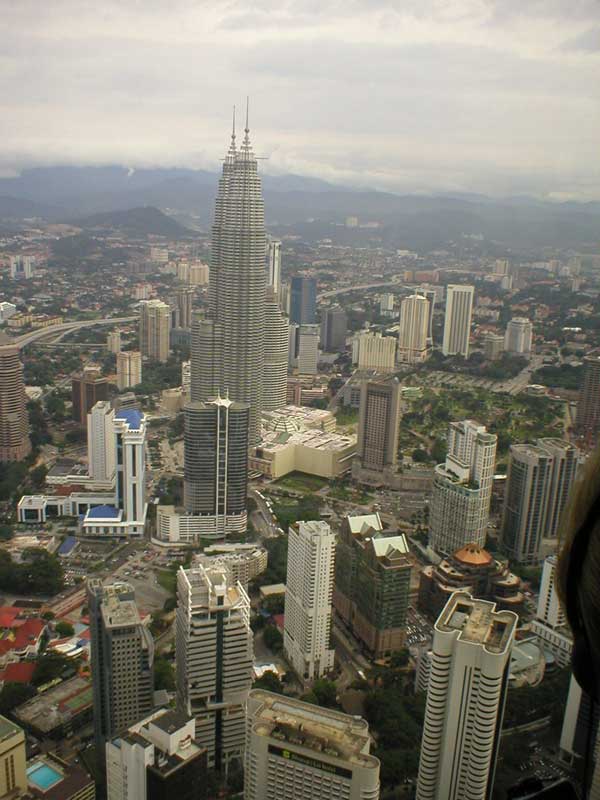
And of course, here's the view towards the Petronas Towers and the heart of the "Golden Triangle." From this vantage point, the Towers appear to be about the same height as the tower. That's because the Tower cheats a bit by being built on something of a hill.
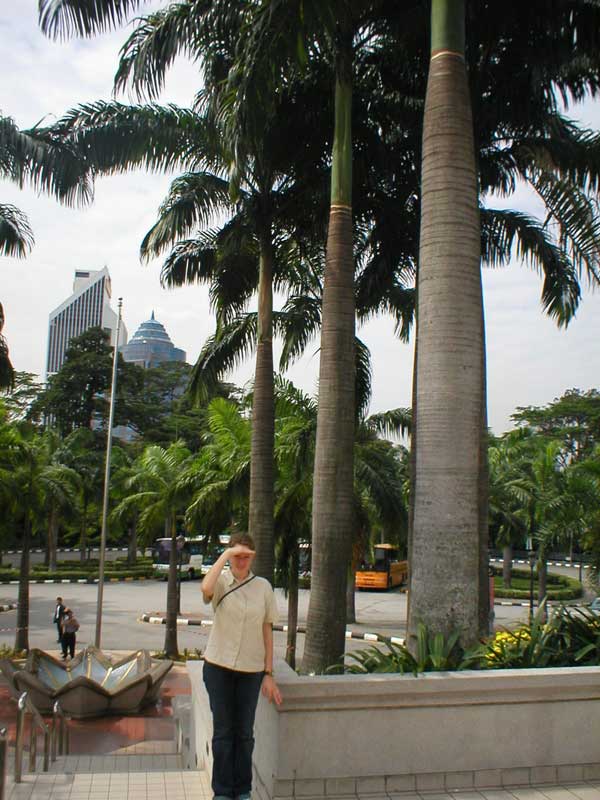
At the base of the tower, Kim wanted her picture taken with some of the local palm trees, just to prove that she had indeed visited the tropics.
That was basically the crux of our trip to Kuala Lumpur. After three nights in the city, we headed for the Pudraya Bus Station (a hot, confusing, crowded building) to take the bus to the Cameroon Highlands.